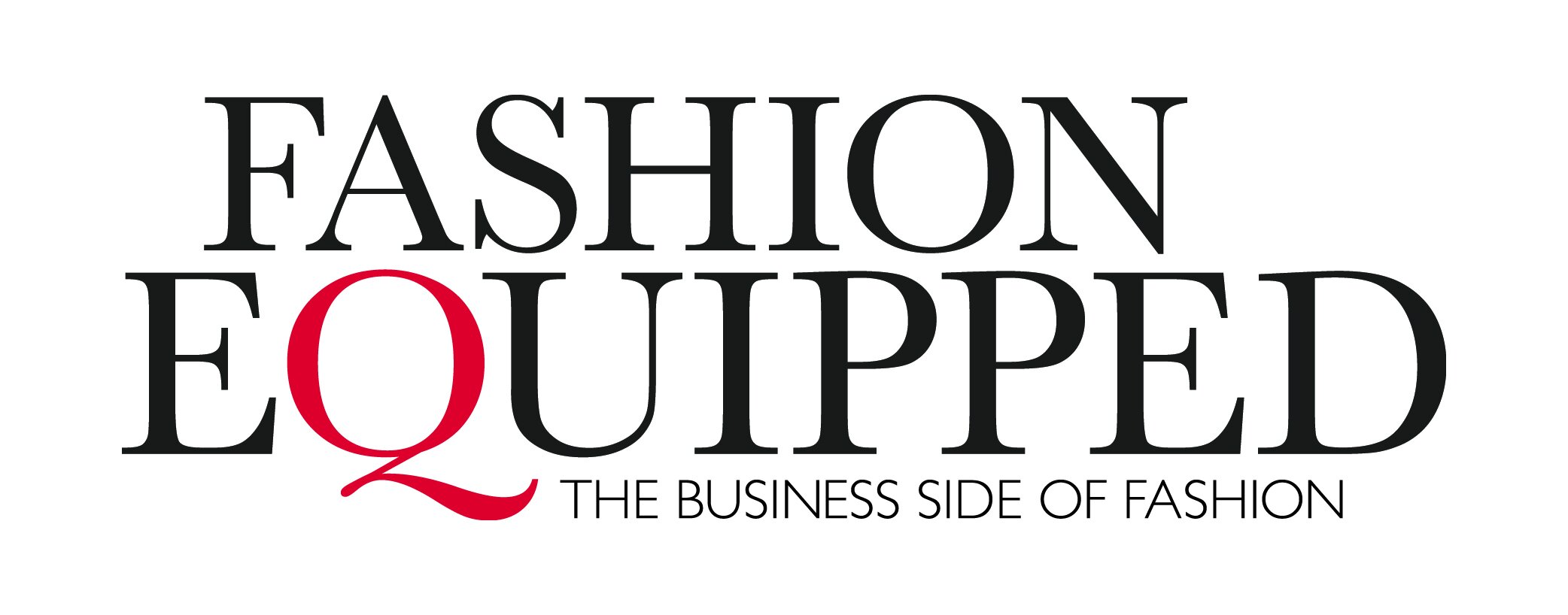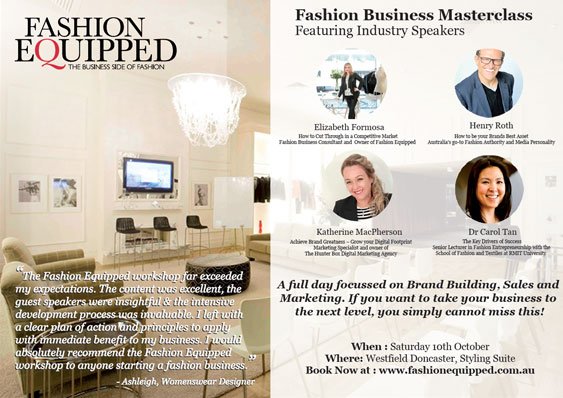 The Melbourne 2015 Home & Giving + Fashion Fair offers a sea of choices for visitors, so how will you differentiate yourself from the stand next door?Here’s 10 Visual Merchandising Tips for a fabulous exhibition stand or retail space from Visual Merchandiser Natalie Coulter, founder of Belle Flanuer.
The Melbourne 2015 Home & Giving + Fashion Fair offers a sea of choices for visitors, so how will you differentiate yourself from the stand next door?Here’s 10 Visual Merchandising Tips for a fabulous exhibition stand or retail space from Visual Merchandiser Natalie Coulter, founder of Belle Flanuer.
- Personalise
The shopping experience has to be a treat! Whether the customer is wandering through your exhibitor stand or is in your retail space, 46% of customers will buy from a retailer who personalises the shopping experience. Therefore the in-store experience is crucial to a successful business and critical to the customer experience. Customers who shop exclusively in-store visit an average of 7.5 times a year vs those who shop online and browse retailers an average of 3 times a year. People shop where they are wanted so help the customer feel connected and welcome! Share yourself, share why you do what you do with the customer. Personalize the shopping experience, you can inspire, connect and inform the customer of your brand philosophy by way of signage, store presentation and display.
- Layout
Know your product and plan the layout of the stand accordingly. Leave a clear line of sight from the front of the space to the back and side to side. Position the merchandise with lower items at the front of stand and taller items towards the back and side walls. Use the space creatively and wisely, direct foot traffic and ensure customers can cover the entire stand/store. Light the back wall and create some drama on it, this will encourage customers to view what’s at the back of store and by doing so check out your products on the way through. Ensure easy accessibility to all products. Group and display items that talk to each other.
- Fixtures
Think outside of the box for your stand fixtures. Working with products that are hand made or reused can add a level of curiosity, interest and can be cost effective. ‘On trend’ fixtures can also add a freshness to any product. Once you’ve worked out your stand style to suit your product, invest the time and money to get the fixtures right. These same fixtures can be reused time and time again and revamped by wrapping, covering, painting and layering with other materials to give them a fresh look at each fair or event. 64% of retail sales come from ‘eyelines’, so in placing fixtures, understand where the optimum eyeline is and display your hot product at this height.

- Theme
Identify the connecting thread of all of your products, celebrate this thread and incorporate props and quirky pieces that tie back to the product. For example previously at the Sydney 2015,
Home & Giving Fair now with
FASHION EXPOSED REVIVED, exhibitor Vintage Beach Shack's showcased vintage fabrics and homewares and they did a very complimentary job in linking props and fixtures with vintage suitcases, rustic window frames and hessian fabric to complete their vintage beach vibe stand.
- Thread
Develop a thread for your display props and fixturing. Start at the window space for a store or the front display point. Link through the space a thread by way of props, texture and display. For instance white painted tree branches might act as a display fixture for bangles and necklaces on front display point, then continued as a prop in display cases and repeated at the back wall as a fixture of sorts for displaying bags, scarves and shoes.
- Negative Space
Allow for negative space in your stand. Don’t overstock the stand with so much product that the customer can’t feel your vibe. Edit your range. Too much product can be overwhelming for anyone making purchase decisions. Composition is key!

- Be the brand
Present yourself in the reflection of your product. Wear what you sell and find a way to be your brand. Retail your way! If wearing the product is not possible, choose a colour or style to link to the stand in some way. Be part of the overall composition package.
- Navigation
Allow for easy navigation throughout the space. Direct your traffic. Increase the time customers spend at your stand. Place different types, yet complimentary products next to each other to encourage items selling together. Squeeze the value out of your stand cost and imagine yourself as the customer, think through their journey in your stand. Retail is detail!
- Graphics and signage
Provoke intrigue and amuse the customer. The store/space signage and the design of any graphics should complement the overall design concept to make a clear statement of the stores identity. Highlight your branding and signage clearly in the space. Tell the story of your product and how it came to be with signage. Be authentic.

- Celebrate the creative process
Get creative, take pride in your stand image and have fun! How your stand looks depends on your planning and efforts. It’s important to think of it as a work in progress. Once you have covered all of the above you can stand back and enjoy your efforts, feeling a sense of accomplishment. As the event unfolds be curious about what’s working best for your stand. What doesn’t work will become obvious and you can tweak and change things up for the next exhibition event.[gallery type="slideshow" size="full" ids="14071,14073,14074,14075,14076,14077,14078,14049"]
About the Author:
Natalie Coulter is the founder of
Belle Flaneur, an initiative which brings together artists, designers and students to collaborate on window displays, visual merchandising and art installations. Natalie also teaches units for the Visual Merchandising department at TAFE Sydney Institute, Australia and has hosted a series of seminars at the recent Sydney 2015,
FASHION EXPOSED REVIVED now at
Home & Giving Fair. This August, Natalie and the team at Belle Flaneur will be curating 'The Style Space' at the Melbourne 2015,
Home & Giving + Fashion Fair.
www.belleflaneur.comFollow Belle Flaneur on Social Media:
FacebookPinterestInstagram


 DATE: Saturday 26 – Sunday 27 August 2017VENUE: Royal Exhibition Building MelbourneWEBSITE: www.fashionexposed.com
DATE: Saturday 26 – Sunday 27 August 2017VENUE: Royal Exhibition Building MelbourneWEBSITE: www.fashionexposed.com



 Ever tried on a pair of pants in your favourite store, and then tried the same size on in another store where they barely do up? Yes, it happens to the best of us and it is the most infuriating experience when ‘your size’ doesn’t fit. But don’t panic – it is nothing to do with you, really.In 2008, the Australian national sizing standard for women's clothing was withdrawn after the fashion industry, federal government and consumer groups found it was dated and irrelevant, according to Standards Australia. Established in 1959, the standard was based on data from a 1926 study - almost 40 years later, it's not surprising to learn those measurements are no longer considered relevant. With huge changes in lifestyles over the years, our bodies, communities and sizes have changed with it.Since then, designers and retailers have been forced to set their own sizing standards and unfortunately, these are become increasingly different. So how can retailers regain control of sizing and ensure that sizing is accurate and actually fits the modern day woman?After hearing how the 3D body scanner and technology at
Ever tried on a pair of pants in your favourite store, and then tried the same size on in another store where they barely do up? Yes, it happens to the best of us and it is the most infuriating experience when ‘your size’ doesn’t fit. But don’t panic – it is nothing to do with you, really.In 2008, the Australian national sizing standard for women's clothing was withdrawn after the fashion industry, federal government and consumer groups found it was dated and irrelevant, according to Standards Australia. Established in 1959, the standard was based on data from a 1926 study - almost 40 years later, it's not surprising to learn those measurements are no longer considered relevant. With huge changes in lifestyles over the years, our bodies, communities and sizes have changed with it.Since then, designers and retailers have been forced to set their own sizing standards and unfortunately, these are become increasingly different. So how can retailers regain control of sizing and ensure that sizing is accurate and actually fits the modern day woman?After hearing how the 3D body scanner and technology at  Further Information The Textile and Fashion Hub offers sampling & short run manufacturing, industry relevant training courses for designers, students and small businesses as well as customised industry training and a series of workshops and events.Located in the heart of Richmond, with state of the art facilities and the latest in industry technology, the Textile and Fashion Hub is the missing link between the birth of a creative concept, and its emergence as a finished product.Industry experts are available to assist designers and businesses with their garment development and manufacturing requirements, with a series of fee for service options for knitting and printing.The Textile and Fashion Hub is the go-to for sampling, product development, industry training & short-run manufacturing.A series of courses and workshops are run throughout the year, including:
Further Information The Textile and Fashion Hub offers sampling & short run manufacturing, industry relevant training courses for designers, students and small businesses as well as customised industry training and a series of workshops and events.Located in the heart of Richmond, with state of the art facilities and the latest in industry technology, the Textile and Fashion Hub is the missing link between the birth of a creative concept, and its emergence as a finished product.Industry experts are available to assist designers and businesses with their garment development and manufacturing requirements, with a series of fee for service options for knitting and printing.The Textile and Fashion Hub is the go-to for sampling, product development, industry training & short-run manufacturing.A series of courses and workshops are run throughout the year, including:


 Fashion Business ConsultantSupporting Startups, Emerging Designers and Small Business.
Fashion Business ConsultantSupporting Startups, Emerging Designers and Small Business.




 Natalie Coulter is the founder of
Natalie Coulter is the founder of